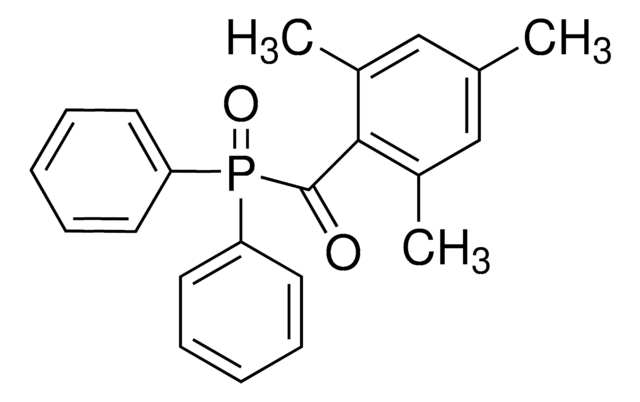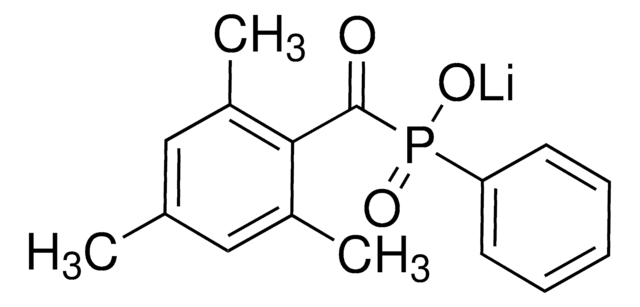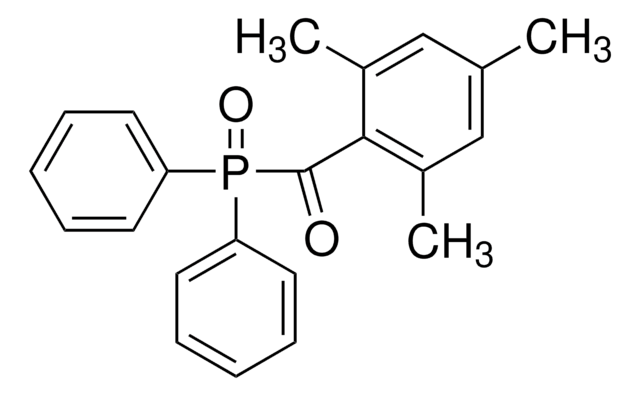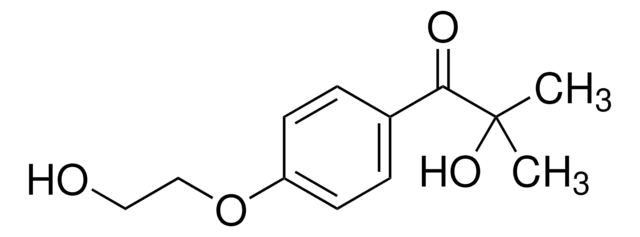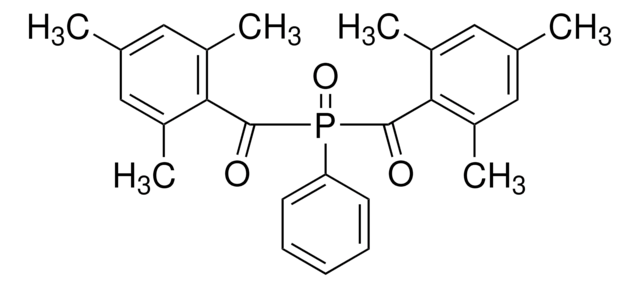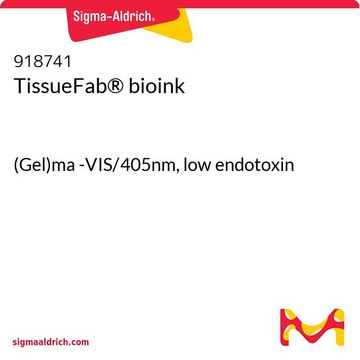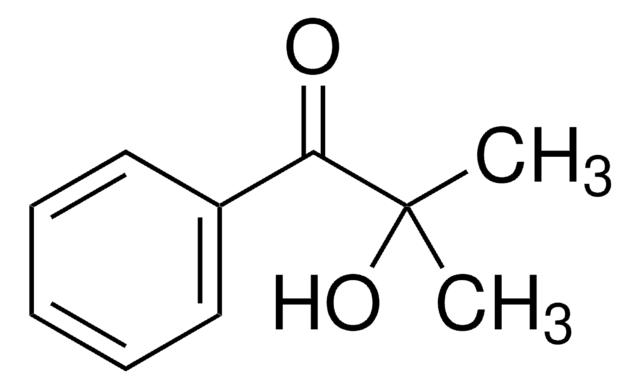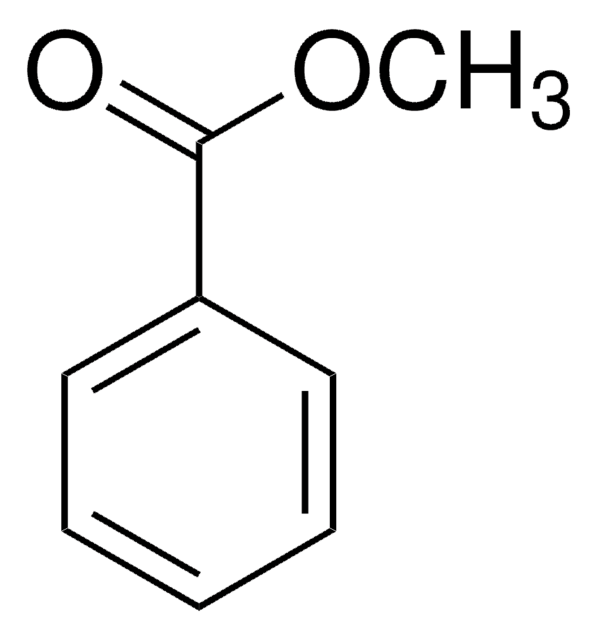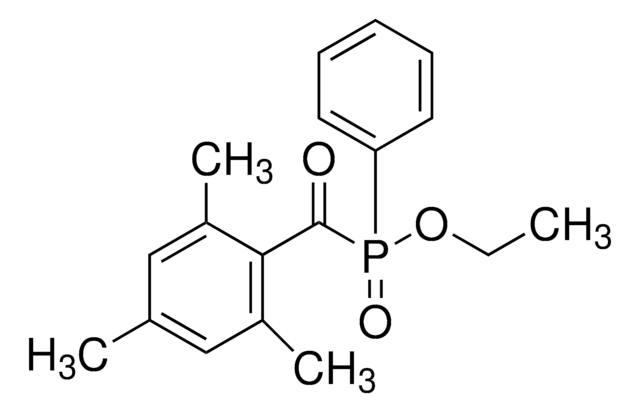推荐产品
表单
powder or solid
颜色
white to off-white
SMILES字符串
O=P(C1=CC=CC=C1)(C(C2=C(C)C=C(C)C=C2C)=O)C3=CC=CC=C3
InChI
1S/C22H21O2P/c1-16-14-17(2)21(18(3)15-16)22(23)25(24,19-10-6-4-7-11-19)20-12-8-5-9-13-20/h4-15H,1-3H3
InChI key
VFHVQBAGLAREND-UHFFFAOYSA-N
正在寻找类似产品? 访问 产品对比指南
应用
The water-dispersible photoinitiator nanoparticle contains 5% (w/w) of the type I photoinitiator diphenyl(2,4,6-trimethylbenzoyl)phosphine oxide (TPO). TPO is highly efficient but water-insoluble. This water-soluble TPO based photoinitiator enables rapid 3D printing of structures prepared in aqueous solutions while bringing environmental advantages by using low-energy curing systems and avoiding the need for solvents.
The extinction coefficient of the new water-dispersible nanoparticles of TPO is more than 300 times larger than the best and most used commercially available water-soluble photoinitiator, Irgacure 2959. The TPO nanoparticles absorb significantly in the range from 385 to 420 nm, making them suitable for use in commercially available, low-cost, light-emitting diode-based 3D printers and UV-curing devices.
The extinction coefficient of the new water-dispersible nanoparticles of TPO is more than 300 times larger than the best and most used commercially available water-soluble photoinitiator, Irgacure 2959. The TPO nanoparticles absorb significantly in the range from 385 to 420 nm, making them suitable for use in commercially available, low-cost, light-emitting diode-based 3D printers and UV-curing devices.
警示用语:
Warning
危险声明
危险分类
Aquatic Chronic 2 - Repr. 2 - Skin Sens. 1
储存分类代码
11 - Combustible Solids
WGK
WGK 3
3D printing of responsive hydrogels for drug-delivery systems
Magdassi, S. et al.
Journal of Chemical and Pharmaceutical Sciences
, 1(4), 219-229 (2017)
Amol A Pawar et al.
Science advances, 2(4), e1501381-e1501381 (2016-04-07)
In the absence of water-soluble photoinitiators with high absorbance in the ultraviolet (UV)-visible range, rapid three-dimensional (3D) printing of hydrogels for tissue engineering is challenging. A new approach enabling rapid 3D printing of hydrogels in aqueous solutions is presented on
商品
Water-dispersible photoinitiator nanoparticles enable novel formulations for 3D bioprinting, tissue engineering, and device manufacturing.
相关内容
组织工程利用骨架、活细胞和生物活性分子通过模拟体内微环境来构建组织培养物,从而修复或替换受伤的组织。
Tissue engineering fabricates tissues cultures from scaffolds, living cells, and biologically active molecules by simulating the microenvironment of the body to repair or replace damaged tissue.
我们的科学家团队拥有各种研究领域经验,包括生命科学、材料科学、化学合成、色谱、分析及许多其他领域.
联系技术服务部门